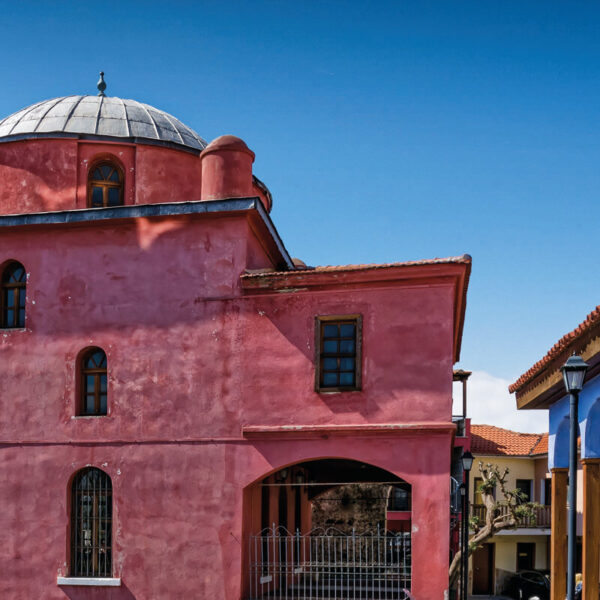Mohammed Ali's Square and Statue
Mohammed Ali’s Square is a historic open space in the Panagia district of Kavala. The imposing equestrian statue of Mohammed Ali Pasha, the founder of modern Egypt and one of Kavala’s most famous historical figures, dominates the square. It was built in the early 20th century to honour his legacy. The statue stands in front of his birthplace, now a preserved historic house, and forms a landmark ensemble that celebrates both his political achievements and his connection to the city of Kavala.
The square was built between 1931 and 1934 as part of the urban works on Zalongou Street, now Theodorou Poulidou Street. It was specifically designed to host the statue of Mohammed Ali, a gift from the Greek Communities of Egypt to the city of his birth.
The equestrian statue was made in Paris by Greek sculptor Konstantinos Dimitriadis and depicts Mohammed Ali on horseback, sword by his side, symbolising peace and return. The design of the square was supervised by Ernesto Verucci Bey, architect of the Egyptian royal court, and was built with tufa stone, marble and cement mortar. A double staircase and tiered platforms give the square a monumental and balanced look.
There is another statue of Mohammed Ali in Alexandria, Egypt, but with the sword drawn in glory. This one in Kavala is the only one with him as a returning statesman and not a conquering warrior.
History & Culture
The initiative to create the statue and square was taken in 1929 by the Greek Communities of Egypt in collaboration with the Greek state, in recognition of Mohammed Ali’s role as a reformer who supported Greek commercial and social activity in Egypt—especially in the cotton trade. The statue was a gesture of gratitude and a tribute to one of the most famous historical figures born in Kavala.
Konstantinos Dimitriadis (1881-1943) the sculptor of the statue was an international acclaimed artist who studied in Athens, Munich and Paris. He won the gold medal in sculpture at the 1924 Olympic Games in Paris with his work Discobole Finlandais. A copy of that work still stands outside the Panathenaic Stadium in Athens.
Dimitriadis returned to Athens in 1930 and was appointed the first director of the Athens School of Fine Arts with the support of Prime Minister Eleftherios Venizelos. He collaborated with several famous artists on public monuments including the Monument to the Unknown Soldier in Syntagma Square, Athens.
For the Mohammed Ali statue Dimitriadis made detailed studies in Cairo and Kavala and received historical clothing references from Verucci Bey who also helped with the placement and context of the statue. By 1931 a scale model of the square was ready and between 1931-1933 the statue was cast in bronze at the famous Rudier Foundry which had cast the works of Auguste Rodin whom Dimitriadis admired deeply.
The statue was handed over to the city in 1934 but due to the political instability and the Second World War it was covered for 15 years. The official unveiling was only on December 6, 1949 the centenary of Mohammed Ali’s death. The ceremony was conducted by Prince Amr Ibrahim of Egypt although Dimitriadis had passed away by then and couldn’t see the final tribute to his work.
Local Interest
Today Mohammed Ali’s Square is one of the most visited and photographed spots in Kavala. Overlooking the sea and next to the Mohammed Ali House Museum the site has both cultural and scenic depth.
The statue remains a powerful symbol of the city’s ties to Egypt and the broader Mediterranean. The square is a favourite spot for tourists, with unobstructed views, quiet atmosphere and the chance to connect with the legacy of a man who shaped not only Kavala but also the modern Middle East.




